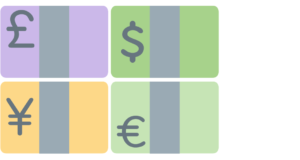Equity markets were generally stronger during September. The MSCI World ex-Australia Index (Hedged) rose by 1.5%. Interest rate cuts in the US and significant stimulus measures announced by the Chinese government both supported equity market returns. Emerging Market equities outperformed Developed Markets (on an Unhedged basis), returning 4.4%.

USA
US equities were stronger than Developed Markets. The S&P 500 returned 2.1% over September. The Federal Reserve’s decision to lower interest rates by 50 basis points was a key development. The interest rate cuts were the first since the pandemic. Inflation continued to move toward the US Federal Reserve’s 2% target, which helped to more evenly balance inflation with strong employment.

Europe
The MSCI Europe Index was a bit weaker in September. Performance was mixed across the continent. In September, the European Central Bank (ECB) again eased interest rates by 25bps, to 3.5%. Euro area inflation is now tracking below the ECB target inflation rate of 2%. This is after the drop in inflation to 1.8% in September. A key reason behind the fall in inflation has been weaker energy prices which tend to be highly volatile. Measures of core inflation (excluding food and energy) remain above the European Central Bank’s target.

Asia
Chinese equities were noticeably stronger, returning 23.3% for September. This followed the Chinese government’s announcement of stimulus measures for the economy and property sector. The Chinese government’s measures were also intended to signal support and improve sentiment for capital markets.
Japanese equities were weaker again in September. This followed from August’s significant volatility.

Australia
The Australian equity market outperformed Developed Markets, returning 3.1% in September. Equity markets benefited from the positive sentiment that rose as a result of the Chinese stimulus announcement and higher commodity prices.
The materials sector returned 13% for the month. The Information Technology sector also outperformed the broader Index for the second month in a row, although Healthcare and Consumer Staples were weak. GDP growth for the June quarter rose by a modest 0.2%. Household consumption fell 1.1% over the quarter and GDP growth on a per capita basis continues to be negative.

Currency and bonds
Global bond returns were positive over September, returning 1.1%.
Australian bonds were also positive at 0.3%.
Bond yields were lower in the US, which was likely because of the US Federal Reserve rate cut. This also supported the probability of further rate cuts in the next year, along with the moderating inflation.
The US 10-year government bond yield declined by 13bps to 3.79%. The Australian 10-year government bond yield stayed at 3.97%.
The Australian dollar was stronger against most major currencies. It rose:
- 2.2% against the US Dollar
- 1.4% against the Euro
- 0.4% against the GB Pound
- 0.4% against the Japanese Yen
The US Dollar was generally weaker against most primary trading partners. This partially reflected expectations for future rate cuts in the US.

